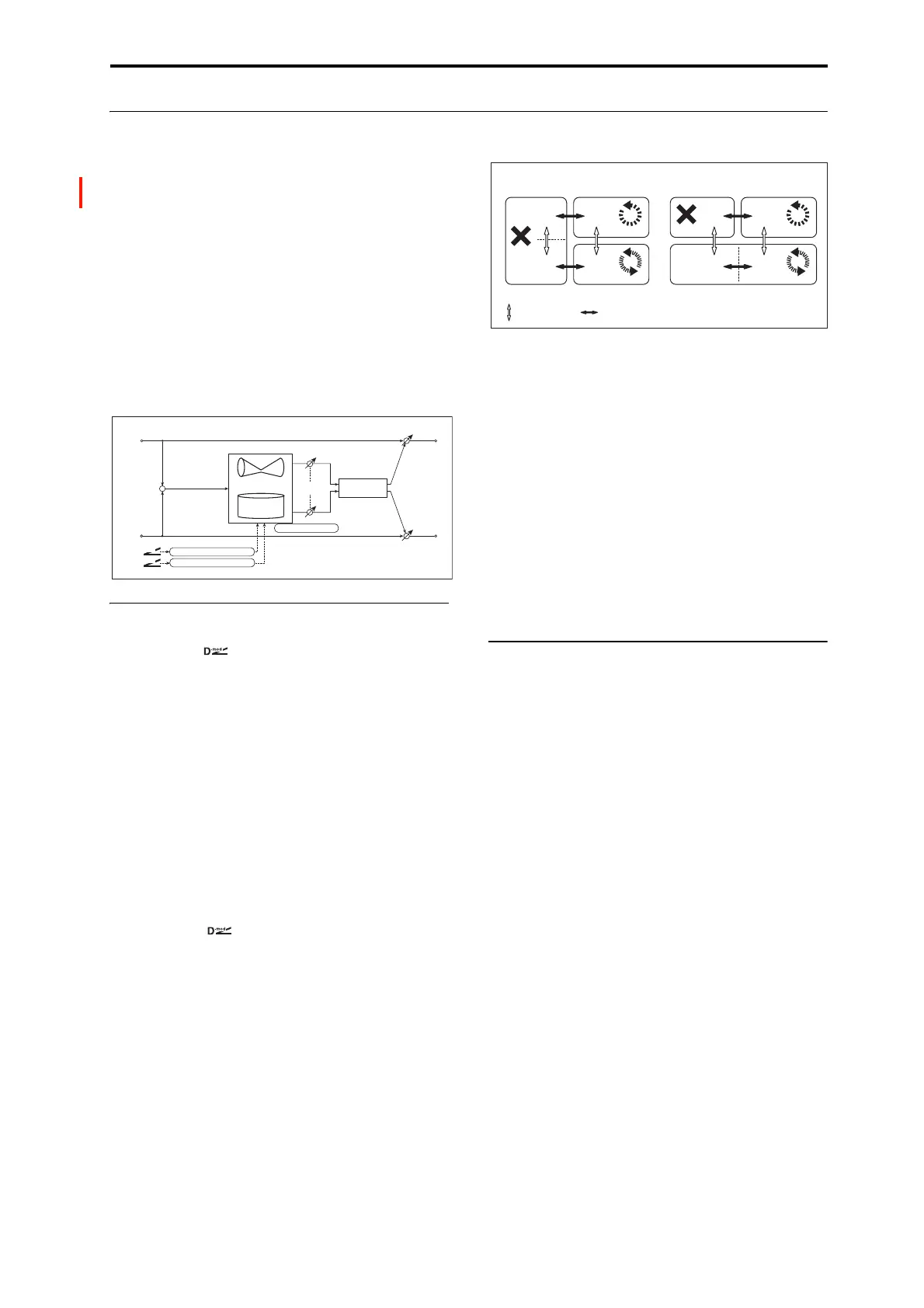Modulation and Pitch Shift 076: Rotary Speaker Pro CX
831
076: Rotary Speaker Pro CX
This effect models a vintage rotary speaker, with detailed
control over both timbre and behavior. This effect model is
equivalent to the CX-3 Classic model. For the more recent
version of the Rotary Speaker model, use “197: Rotary
Speaker Pro CX Custom” on page 897.
For more information on rotary speakers, see “7–2: Rotary
Speaker” on page 199.
Rotary Speaker speed indicator
In PROGRAM, COMBINATION, SEQUENCER, and SET
LIST modes, if there is an active Rotary Speaker, its current
state (Fast, Slow, or Stop) is shown at the top of the display.
For more information, see “Rotary Speaker speed indicator”
on page 828.
CONTROL
Mode Switch [Rotate, Stop]
This lets you stop the motion of the Rotary Speaker. Even
when stopped, the speaker will still affect the timbre.
The horn and rotor can each take different amounts of time
to start and stop their rotation. For more information, see the
Start Acceleration and Stop Deceleration parameters under
“HORN,” below.
Source [Off…Tempo]
This selects a modulation source to start and stop the Rotary
Speaker.
Mode [Toggle, Moment]
This determines the behavior of the Mode Switch. For more
information, see “Mode” on page 829.
Speed Switch [Slow, Fast]
Switches the speaker rotation speed between slow and fast
Source [Off…Tempo]
Selects a modulation source for Slow/Fast.
Mode [Toggle, Moment]
This determines the behavior of the Speed Switch. For more
information, see “Mode” on page 829.
Fast Overrides Stop [Check-box]
On (checked): setting the Speed Switch to Fast will make
the rotors speed up, even if the Mode Switch is set to Stop.
Off (un-checked): if the Mode Switch is set to Stop, the
rotors will always stay stopped, regardless of the Speed
Switch.
Horn Stop Phase [degrees] [Free, –180…+180]
When the Mode Switch is set to Stop, the Horn gradually
comes to rest pointing one way or another. This allows you
to control where it will stop.
Free lets it come to rest naturally, at a more or less random
spot. The other settings, –180 to +180, let you force it to land
in a specific position.
The speaker position has a dramatic effect on the tone, so
specifying a fixed position allows you to achieve consistent
timbral results.
Rotor Stop Phase [degrees] [Free, –180…+180]
This determines where the Rotor will land when the Mode
Switch is set to Stop. For more details, see “Horn Stop Phase
[degrees],” above.
HORN
The horn carries the effect’s high frequencies, while the rotor
carries the low frequencies.
Fast Speed [0…100]
This specifies the speed of the Horn when the Speed Switch
is set to Fast.
Slow Speed [0…100]
This specifies the speed of the Horn when the Speed Switch
is set to Slow.
Acceleration [0…100]
This sets how long it takes the Horn to change from the Slow
speed to the Fast speed.
Deceleration [0…100]
This sets how long it takes the Horn to change from the Fast
speed to the Slow speed.
Start Acceleration [0…100]
This sets how long it takes the Horn to come up to speed
after the Mode Switch has changed from Stop to Rotate.
Stop Deceleration [0…100]
This sets how long it takes the horn to come to rest after the
Mode Switch has changed from Rotate to Stop.
Left
Right
Wet / Dry
Wet / Dry
Wet: Mono In - Stereo Out / Dry: Stereo In - Stereo Out
Mic Distance
Mic Spread
Horn/Rotor
Balance
D
-mod
D
-mod
Mode Switch: Rotate/Stop
Speed Switch: Slow/Fast
Speaker Simulation
Horn
Rotary Speaker
Rotor
+
Fast Override Stop
Mode SwitchSpeed Switch
Fast Override Stop: O
Fast
Slow
Stop
Stop
Fast
Stop
Slow
Rotate
Fast
Rotate
Slow
Fast Override Stop: On
Stop
Fast
Slow
Stop
Fast
Stop
Slow
Rotate
Fast
Rotate
Slow
